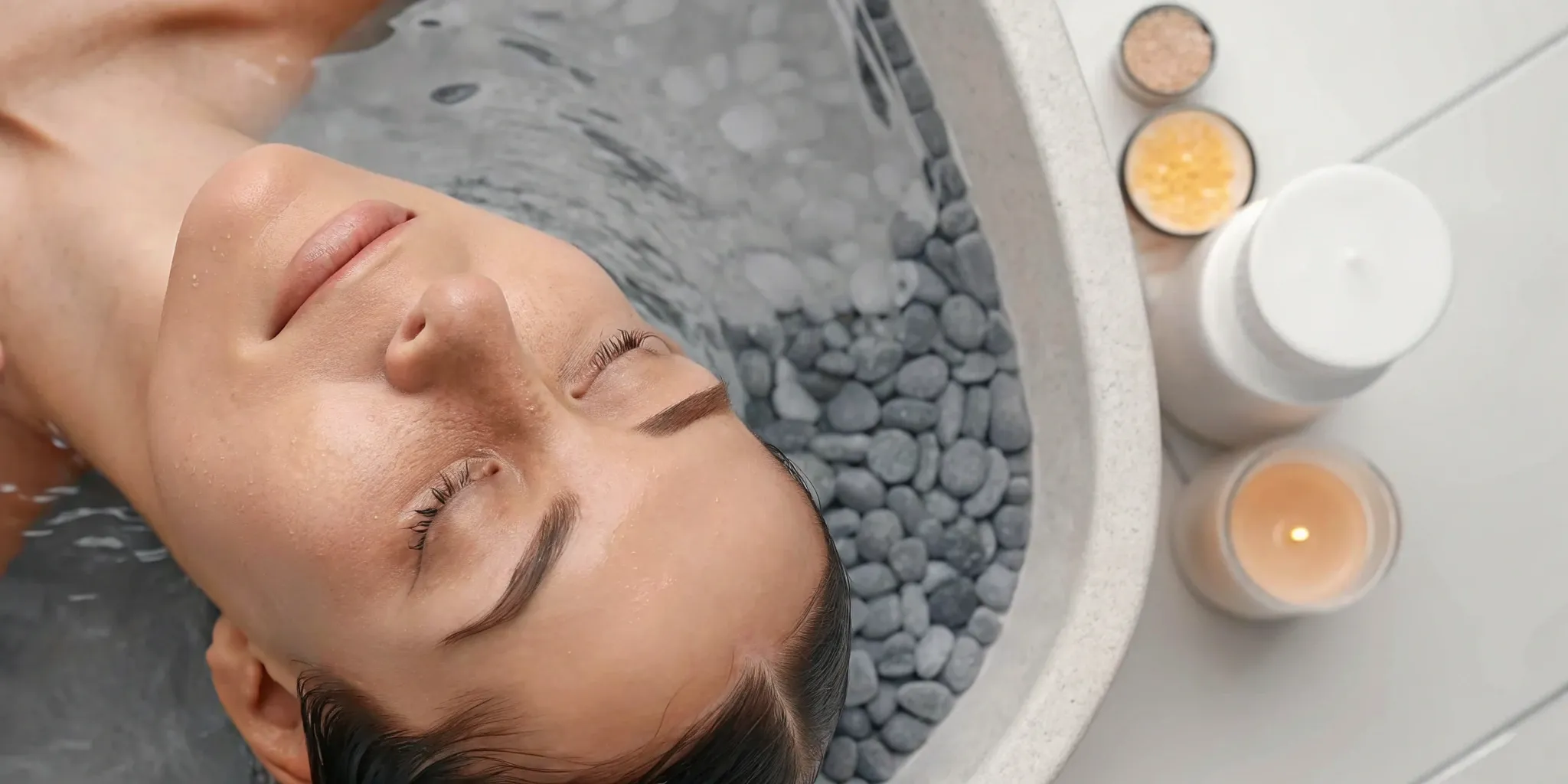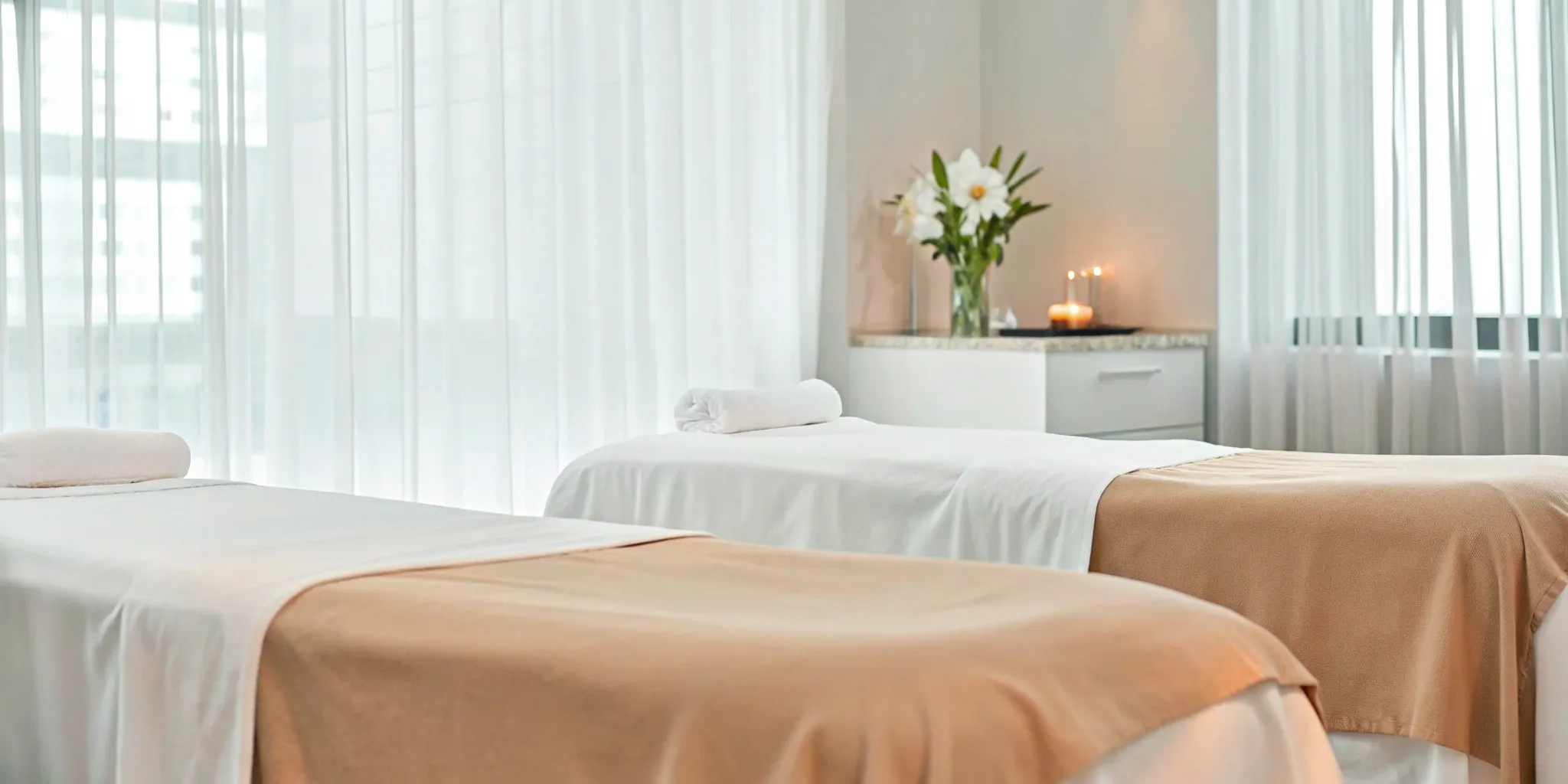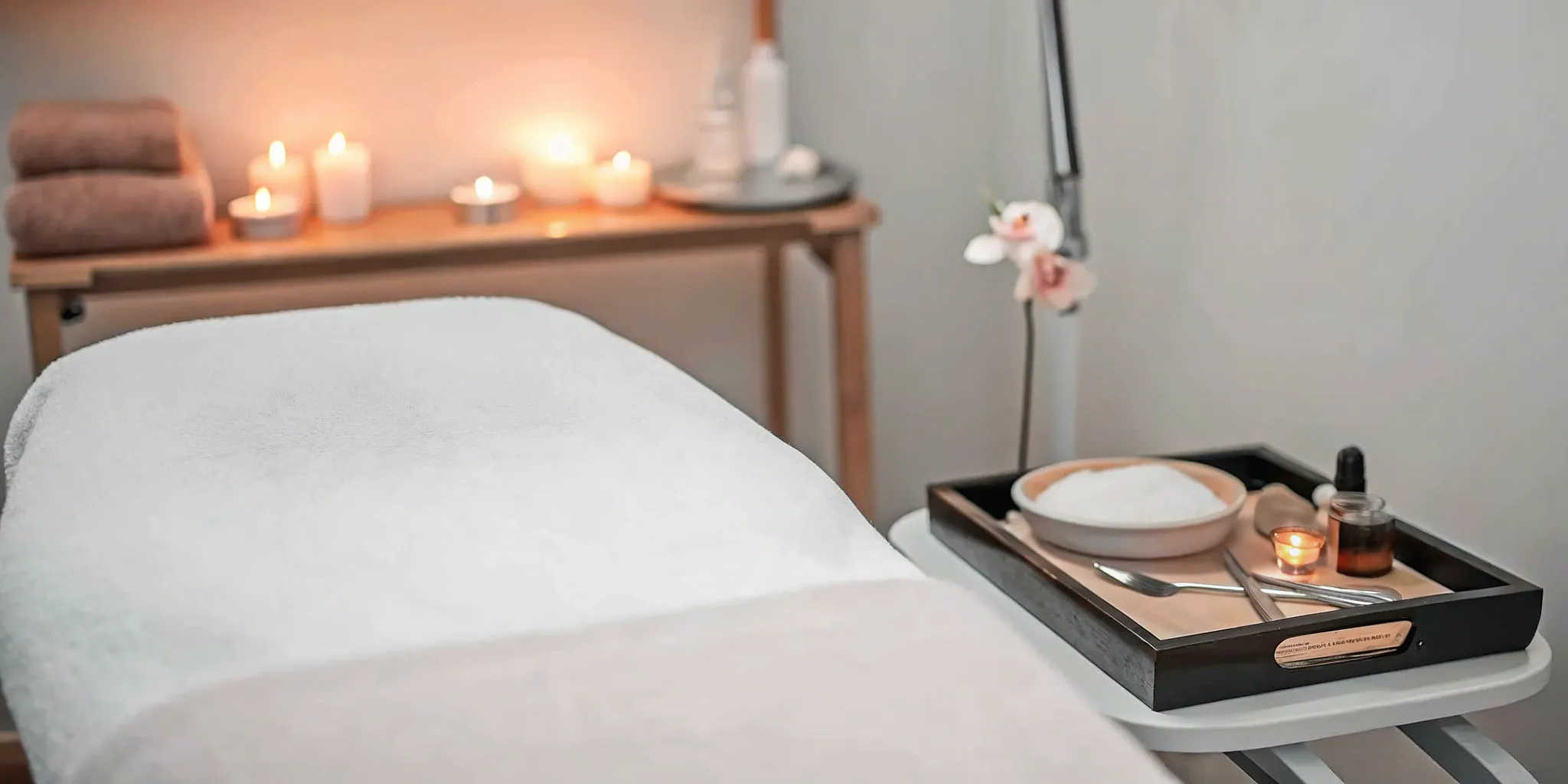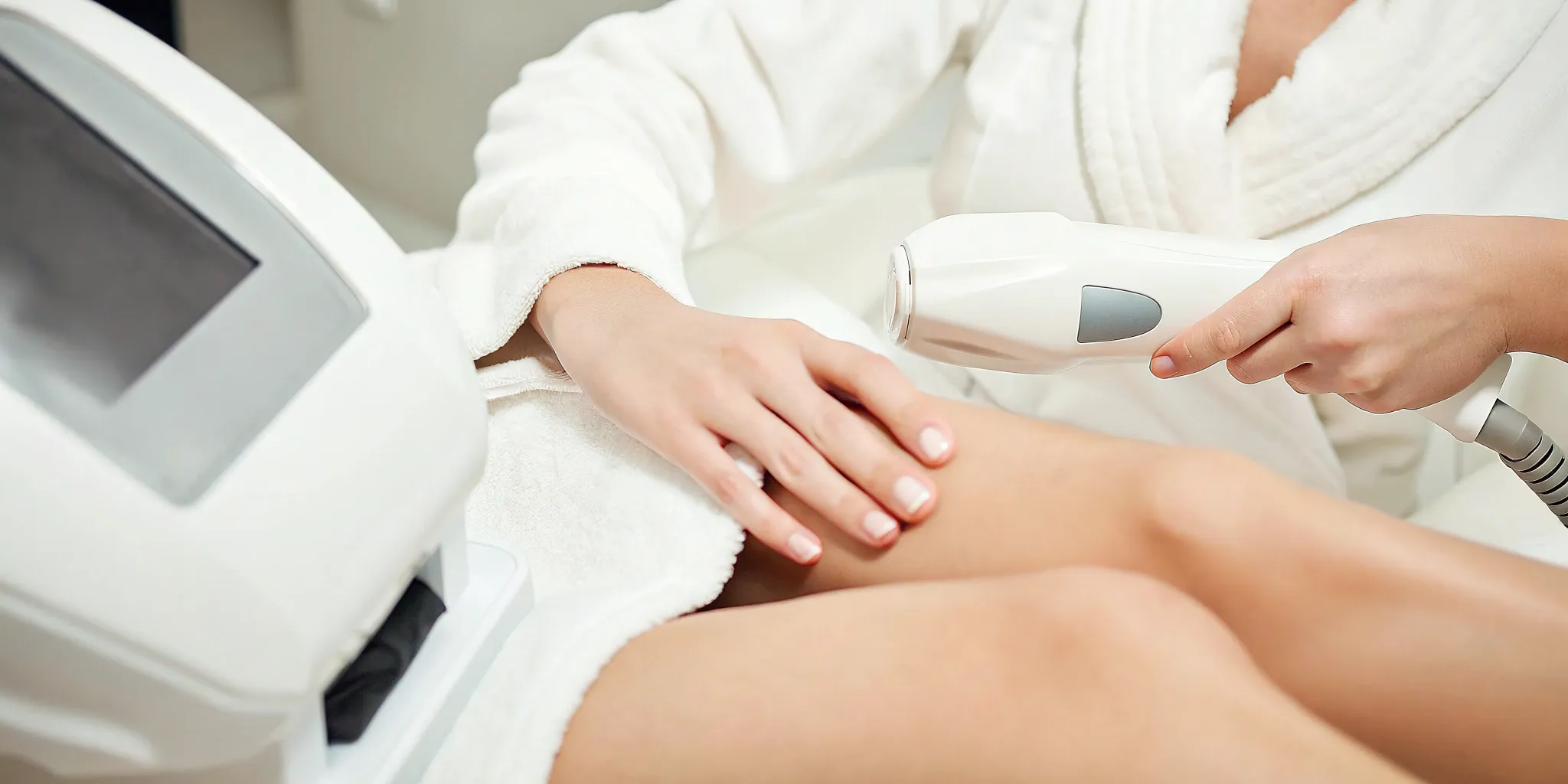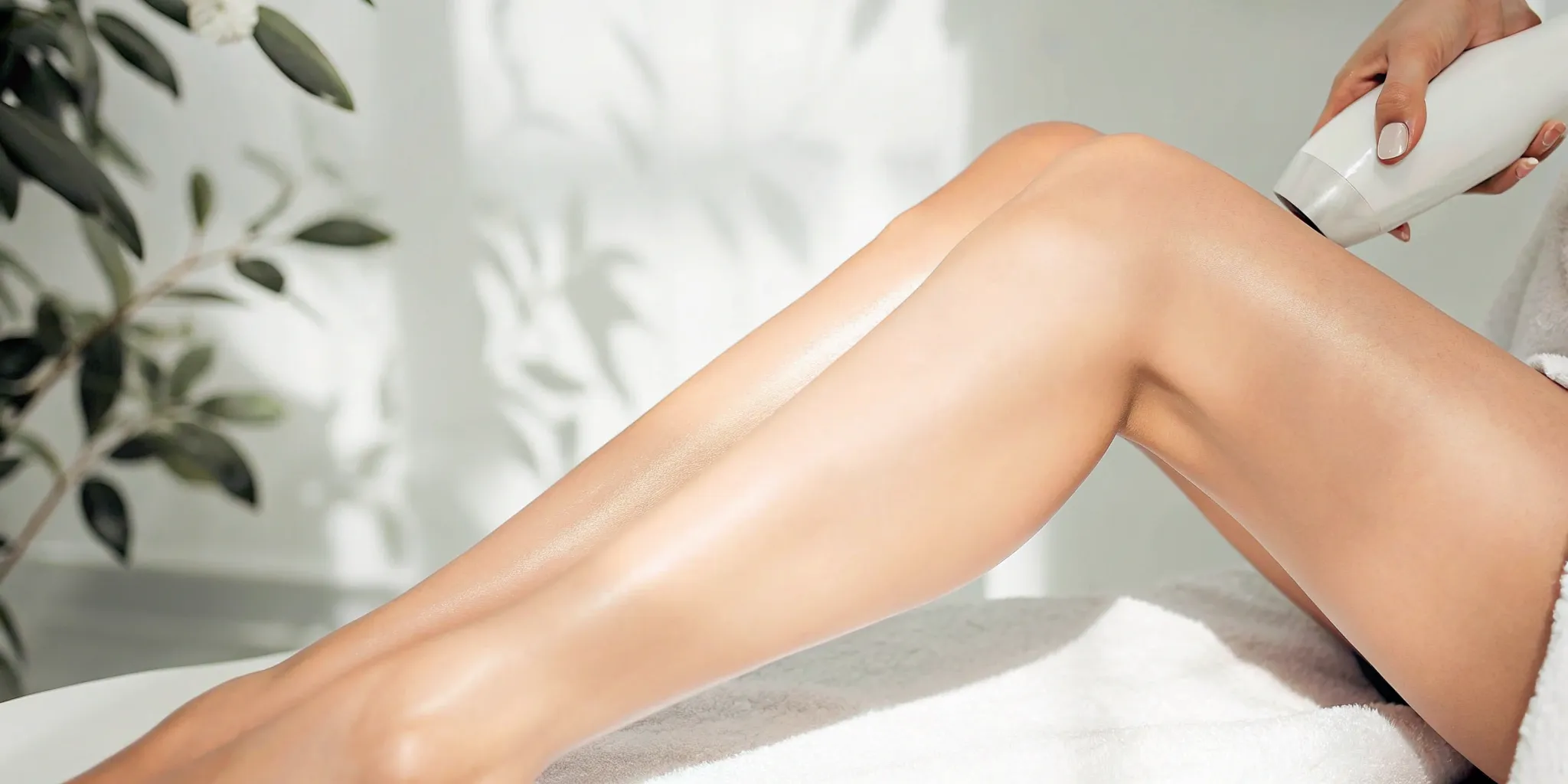Ready to make the most of your HydraFacial? The key to long-lasting results lies in proper post HydraFacial care. This isn’t just about avoiding a few things; it’s about actively supporting your skin’s health and maximizing the benefits of the treatment. Whether you’re a HydraFacial newbie or a seasoned pro, this guide offers valuable insights and practical tips to keep your skin looking its best. Let’s explore the world of post-HydraFacial care together!
Key Takeaways
- Proper aftercare is key for glowing skin: Gentle cleansing, hydration, and diligent sun protection are essential after a HydraFacial. Avoid harsh ingredients, excessive sun, and strenuous activity to maintain your results.
- Know what to expect post-treatment: Mild redness or small breakouts can happen. A cool compress can soothe redness, while patience is best for minor breakouts. Contact your skincare professional if anything concerns you.
- Keep your skin radiant long-term: Regular HydraFacials, a consistent skincare routine, and daily sunscreen are your best allies for a lasting glow. Consult your aesthetician for personalized advice and a treatment plan.
What is a HydraFacial?
A HydraFacial is a popular multi-step facial treatment known for its non-invasive approach to clearer, healthier skin. It’s designed to address a variety of skin concerns and is suitable for most skin types. The treatment typically involves cleansing, exfoliating, extracting impurities, and hydrating the skin with customized serums. This process, sometimes called dermal infusion, delivers active ingredients directly into the skin for maximum effectiveness. Think of it as a deep cleaning and hydrating boost for your face, leaving your skin feeling refreshed and rejuvenated. If you’re curious to learn more, explore our HydraFacial services to see how it can fit into your skincare routine.
HydraFacial Aftercare: Your Essential Guide
So you just had a HydraFacial—congratulations on taking a step towards glowing skin! To maximize your results and keep your skin happy, follow these aftercare tips.
Immediate Next Steps
Right after your HydraFacial, your skin is in a delicate state. Resist the urge to touch your face to avoid transferring bacteria and causing irritation. It’s best to skip makeup for at least 24 hours to let your skin breathe and absorb all those lovely serums. Finally, steer clear of hot environments like saunas, hot showers, and direct sunlight, which can irritate your freshly treated skin. Think cool and calm for the rest of the day. For more helpful tips and tricks for immediate post-HydraFacial care, check out Sadick Dermatology’s guide.
Cleanse and Hydrate Gently
When you do cleanse, use a gentle, non-abrasive cleanser. Your skin has just been through a deep cleansing and exfoliation process, so there’s no need for harsh scrubbing. Follow up with a hydrating serum or moisturizer. Look for ingredients like hyaluronic acid or ceramides to lock in moisture and support your skin’s recovery. Allura Aesthetics offers additional guidance on creating a post-HydraFacial skincare routine.
Protect Your Skin from the Sun
Sun protection is crucial after a HydraFacial. Apply a broad-spectrum sunscreen with an SPF of 30 or higher about 15 minutes before going outside. Reapply every two hours, especially if you’re sweating or swimming. Daily sunscreen use is key to maintaining your glow and preventing sun damage, so make it a habit. For more insights into maximizing your HydraFacial results through proper aftercare, visit Facelogic and Neaman Plastic Surgery.
Products to Avoid After a HydraFacial
Your skin is freshly treated and a little sensitive after a HydraFacial. It’s important to avoid certain products to maximize your results and minimize any potential irritation. Think of it as giving your skin a breather so it can fully reap the benefits of the treatment.
Skip These: Exfoliants, Retinoids, and Acids
For at least 24 hours post-HydraFacial, steer clear of any skincare products containing retinoids (like Retin-A), glycolic acid, or other exfoliating agents. These ingredients can be too harsh on your newly treated skin and may cause irritation or even undo some of the good work the HydraFacial just did. Your aesthetician at Ultimate Image MedSpa can give you personalized advice on when to reintroduce these products into your routine. We want you to see the best possible results from your HydraFacial.
Avoid These Irritating Ingredients
In addition to harsh chemicals, it’s wise to avoid anything that could further irritate your skin. This includes things like excessive sweating (so maybe skip that intense workout for a day or two), plucking, shaving, or using products with harsh ingredients. While rare, some people experience an allergic reaction to products used during a HydraFacial. If you notice any unusual reactions, contact Ultimate Image MedSpa right away. We’re here to help you achieve your skincare goals and ensure you have a positive experience with our services.
Choosing the Right Sunscreen
After your HydraFacial, your skin is fresh and rejuvenated, making proper protection crucial. Choosing the right sunscreen plays a vital role in maintaining those results and ensuring your skin stays healthy.
Mineral vs. Chemical Sunscreen
One of the first decisions you’ll face is choosing between a mineral and a chemical sunscreen. Mineral sunscreens, like those containing zinc oxide or titanium dioxide, create a physical barrier on your skin that blocks UV rays. Think of them as tiny shields reflecting the sun’s harmful rays away from your skin. This makes them an excellent choice for sensitive skin, especially after a treatment like a HydraFacial. EltaMD UV Elements Tinted Broad-Spectrum SPF 44 is a popular mineral option.
Chemical sunscreens work by absorbing UV rays and converting them into heat, which is then released from your skin. While effective, these can sometimes be more irritating, particularly for freshly treated skin. If you opt for a chemical sunscreen, look for formulas designed for sensitive skin, such as La Roche-Posay Anthelios Melt-In Sunscreen Milk SPF 60.
Understanding SPF and Broad-Spectrum Protection
No matter which type you choose, look for “broad spectrum” on the label. This means the sunscreen protects against both UVA and UVB rays—both of which contribute to skin damage and premature aging. The Skin Cancer Foundation recommends using a sunscreen with an SPF of 30 or higher for daily use. After a HydraFacial, your skin may be slightly more susceptible to sun sensitivity, so consistent sunscreen application is key. Don’t forget to reapply every two hours, especially after swimming or sweating. The American Academy of Dermatology offers additional helpful information on sunscreen use.
Activities to Postpone
After your HydraFacial, give your skin some time to soak up all the benefits. Here are a few activities to postpone:
Skip Intense Workouts
For a few hours post-HydraFacial, skip those intense workouts. Sweating can irritate freshly treated skin and impact your results. As PURE Med Spa advises in their HydraFacial aftercare guide, avoid activities that cause sweating (like exercise, hot showers, and saunas) immediately following your treatment. This helps ensure your skin stays calm and allows the HydraFacial to work its magic.
Avoid the Pool (For Now)
Steer clear of the pool for at least 48 hours after your HydraFacial. Chlorinated water can irritate your skin, potentially leading to discomfort. Facelogic recommends avoiding hot environments—including direct sunlight, saunas, and hot showers—right after a treatment. Similarly, L’Amour Clinic highlights the importance of protecting your skin from harsh conditions post-HydraFacial.
Adjust Your Skincare Routine
After your HydraFacial, your skin will be fresh and receptive to products. This is the perfect time to adjust your skincare routine to maintain and enhance your results. Focus on gentle products and intense hydration in the days following your treatment.
Gentle Product Recommendations
For the first 24 hours post-HydraFacial, stick with a gentle, sulfate-free cleanser. Avoid harsh products like exfoliating treatments, acne medications, or harsh cleansers. Ingredients like Retin-A, glycolic acid, and other exfoliating agents should also be paused for at least a day after your treatment. Your esthetician can offer personalized recommendations based on your skin type and the specifics of your HydraFacial.
Moisturizing Tips
Hydration is key after a HydraFacial. Apply a moisturizer with hyaluronic acid or ceramides to lock in hydration and keep your skin feeling supple. Consider adding a hyaluronic acid serum to your routine for an extra boost. Remember to stay well-hydrated by drinking plenty of water—internal hydration is just as important as external hydration for maintaining healthy, glowing skin. At Ultimate Image MedSpa, we can guide you toward the best products for your skin type and concerns. Schedule a consultation to discuss your post-HydraFacial skincare routine.
Common HydraFacial Aftercare Misconceptions
Let’s clear up some common misconceptions about HydraFacial aftercare so you can make the most of your treatment at Ultimate Image MedSpa.
When Can You Wear Makeup?
One of the most frequent questions is: “When can I put makeup back on?” While it’s tempting to reach for your cosmetics right away, it’s generally recommended to wait. Most experts suggest holding off on makeup for at least 24 hours after your HydraFacial. This gives your skin time to breathe and maximize the absorption of the beneficial serums. Some dermatologists even recommend waiting 48 hours, especially if your skin is sensitive. Check with your aesthetician at Ultimate Image MedSpa for personalized advice. You can contact us to schedule a consultation.
Hydration After Your Treatment
Another misconception revolves around hydration. While the HydraFacial itself deeply hydrates your skin, this doesn’t mean you can neglect your water intake afterward. Think of it this way: the HydraFacial gives your skin a fantastic boost, but maintaining that hydration requires ongoing effort. Drinking plenty of water—aim for eight glasses a day—is crucial for supporting your skin’s overall health and the long-term results of your treatment. This internal hydration works in tandem with the external hydration provided by the HydraFacial, keeping your skin plump, healthy, and glowing. You can also support your skin’s hydration with a high-quality moisturizer, as recommended by your skincare professional at Ultimate Image MedSpa.
Manage Potential Side Effects
While HydraFacials are generally gentle, some people experience mild, temporary side effects. Knowing what to expect and how to manage these can help you feel confident and comfortable post-treatment.
Reduce Redness and Sensitivity
One of the most common reactions after a HydraFacial is mild redness and sensitivity. Think of it like a mild sunburn—a little pink, maybe a bit warm to the touch. This is usually the only side effect, and it typically fades quickly on its own. However, if you’d like to speed up the process, a cool compress can offer relief. Just hold a clean, cool washcloth against the treated area for a few minutes at a time. This simple trick can help calm the skin and minimize any lingering redness. For more information on managing redness after aesthetic treatments, check out this helpful article by Allura Aesthetics. If you experience any unusual or persistent redness, contact Ultimate Image MedSpa for personalized guidance.
Handle Temporary Breakouts
Occasionally, you might notice a few small breakouts after your HydraFacial. This isn’t necessarily a bad sign and can actually be a normal part of the process, especially if you’re addressing congested skin. As Dr. Hala explains, these temporary breakouts can occur as the skin purges impurities. Think of it as your skin’s way of releasing trapped dirt and oil that the HydraFacial dislodged. These breakouts should clear up on their own within a few days. Sometimes, increased sensitivity after a treatment can also lead to a delayed reaction, as explained by Justin Boey, so a little patience is key. However, if you’re concerned or if they seem to be worsening, reach out to your skincare professional at Ultimate Image MedSpa for personalized advice.
Maintain Long-Term Results
Getting a HydraFacial is a great way to refresh your skin, but how can you keep that glow going? Here’s how to make your results last.
How Often Should You Get a HydraFacial?
One of the best ways to maintain your HydraFacial results is to schedule regular treatments. Think of it like going to the gym—consistency is key. Most experts recommend getting a HydraFacial every four to six weeks to keep your skin looking its best. This timeframe allows your skin to complete its natural renewal cycle and benefit from the ongoing hydration and exfoliation. At Ultimate Image MedSpa, we can help you create a personalized treatment plan to meet your specific skincare goals.
Skincare for a Lasting Glow
Between your HydraFacial appointments, a solid skincare routine is essential. After your treatment, your skin is primed to absorb products more effectively, so using high-quality skincare products can significantly extend the life of your glow. Focus on gentle cleansers, hydrating serums, and, of course, daily sunscreen. Protecting your skin from the sun helps preserve the results of your HydraFacial and prevents future damage. We can recommend products tailored to your skin type during your visit to Ultimate Image MedSpa. We’ll help you find the right routine to keep your skin healthy and radiant.
When to Contact Your Skincare Professional
While HydraFacials are generally safe and well-tolerated, it’s always smart to keep an eye out for any unusual reactions. Most of the time, mild redness or slight swelling after a HydraFacial is totally normal and fades quickly. A cold compress can help soothe any temporary irritation, as suggested by the Aayna Clinic. But, sometimes, your skin might need a little extra TLC.
If you notice persistent redness or irritation that doesn’t improve within a day or two, it’s a good idea to reach out to your skincare professional. As Dr. Hala points out, lingering redness or irritation warrants professional guidance. This is especially important if you experience anything out of the ordinary, like an allergic reaction, which although rare, is a possibility, according to Allura Aesthetics.
Everyone’s skin reacts differently. Justin Boey explains how individual skin sensitivity can sometimes lead to a delayed reaction. So, if you’re feeling unsure about anything, don’t hesitate to contact your dermatologist or aesthetician. It’s always better to be safe than sorry when it comes to your skin!
Related Articles
- Expert Hydrafacial Treatment | Revitalize Your Skin
- Revitalize Your Skin: Ultimate Hydrafacial Treatment Guide
- Transform Your Skin: Experience the Hydrafacial Treatment
Frequently Asked Questions
What exactly does a HydraFacial do? A HydraFacial deeply cleanses, exfoliates, and hydrates your skin using a specialized device. It’s a multi-step process that extracts impurities and infuses customized serums to address specific skin concerns, leaving your skin refreshed and rejuvenated.
What should I avoid after my HydraFacial? For optimal results, avoid harsh skincare products like retinoids, exfoliants, and acids for at least 24 hours. Skip intense workouts, swimming, and excessive sun exposure immediately after your treatment to minimize irritation. Your aesthetician can provide personalized guidance on when to resume these activities and products.
How do I choose the right sunscreen after a HydraFacial? Opt for a broad-spectrum sunscreen with an SPF of 30 or higher. Mineral sunscreens are generally gentler on freshly treated skin. Reapply every two hours, especially if you’re outdoors or sweating.
What can I do to make my HydraFacial results last longer? Maintain a consistent skincare routine with gentle cleansers and hydrating products. Regular HydraFacial treatments, typically every four to six weeks, are recommended to maintain optimal results and address ongoing skin concerns. Your aesthetician can help you create a personalized treatment plan.
What if I experience unusual side effects after my HydraFacial? Mild redness and sensitivity are common and usually subside quickly. However, if you experience persistent redness, unusual breakouts, or any other concerning reactions, contact your skincare professional immediately for personalized advice and care.


